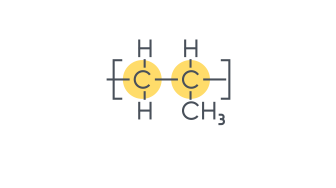FAQ
- What are the physical tolerances of a capacitor?
The maximum deviation in length, width and height is 0.1mm except in the following capacitors.
| tolerance (mm) | height (mm) | capacitor |
| ±1 | 53.5 | C-CAP01 |
| ±1 | 91.5 | C-CAP02 |
| ±1 | 82.9 | C-CAP03 |
| ±1 | 66 | C-CAP04 |
| ±1 | 81.5 | C-CAP05 |
| ±0.5 | 120.5 | CMF |
| ±1 | 188 | CLF3 |
| ±0.3 | 78.5 | Quad1000 |
| ±0.3 | 101 | Quad1001 HV |
| ±0.3 | 71.5 | C500Q |
| ±0.1 | 71.5 | C500T |
- What is the capacitance tolerance of Celem capacitors?
Capacitance might vary to a maximum deviation of 10%. Other tolerances are available upon request.
- Do Celem capacitors comply with the Restriction of Hazardous Substances Directive (RoHS)?
All Celem capacitors comply with the RoHS (including all the new models), except the following: All CP models, CPRI200, CPRI300.
Please note: CSP300 can be ordered with RoHS compliance upon special request.
- I currently use the Celem CSM150 1.2µF capacitor, but can no longer find it in your catalogue. Why was this product’s specification changed?
The capacitor has not been changed in any way. We have simply adjusted the specified capacitance values to reflect the actual measured average value.
- What is the lifetime of Celem capacitors?
Celem capacitors are built to work continuously (24/7) for more than 100,000 hours.
- Why was the color of the CP30/75’s insulator changed from blue to brown?
The color of mica capacitors represents their temperature rating. A blue or black color indicates that the insulator can sustain up to 80°C, while the brown insulator is rated for 150°C. The change indicates that the CP30/75 is now rated for 150°C.
- Can you help me to select a capacitor?
Yes! Celem’s experienced team is ready to help you to choose a capacitor which best meets your requirements. You can send your inquiry here and we will get back to you soon with our recommendations.
Voltage at high frequencies is determined by voltage limitations, since V = Imax/(2πfc).
The voltage has a maximum level Vmax, which is the highest value that enables safe operation .
- Why does the allowed current decrease at low frequencies? Why is it limited at high frequencies?
Current at low frequencies is determined by current limitations, since I = Vmax·(2πfc).
The current has a maximum level Imax, which is the highest value that enables safe operation .
- Why does the allowed reactive power decrease at low or high frequencies? Why is it limited in between?
The reactive power is derated at low frequencies because of current decline, and at high frequencies because of voltage decline.
The reactive power has a maximum level Qcmax, which is the highest value that enables safe operation.
- What are the losses/tanδ of Celem capacitors?
Capacitor bank losses consist of two elements: capacitor losses and connection losses. Each represents about 0.05% of the reactive power.
The total losses of a capacitor bank is their sum, about 0.1% of the reactive power.
- How can we prevent a capacitor from overheating?
To insure safe operation of your system, it is vital to keep the capacitor’s external temperature under 40°C by water cooling either the capacitor itself, the plates it is mounted on, or the bus bars. The required cold water flow is determined as follows:
Water Flow (liter/min) = 14.36 · Plosses (kW) / (40°c – Twater).
Please see Technical Notes.
- Some oil seems to be coming out of the capacitor. Is this normal?
It is normal for a slight amount of oil to come out of the capacitor (“sweating”) during its first period of operation.
An excessive amount of oil, though, might indicate that it’s overheating. Please check your cooling system, mounting quality and the capacitor’s temperature. Please see Technical Notes.
- Can you help me to design a capacitor bank?
Yes! Celem’s experienced team is ready to help you design your application. Please send your inquiry and we will get back to you shortly.
- Do you have a ready-to-use assembly system?
Yes! You can use our AS150/3 or AS150/5 to mount CSM150, CSM150/200 or CSM300 capacitors in series, in parallel, or in a serial–parallel combination.
Both assembly system models enable hot-swapping of capacitors and contain a built-in water cooling system.
In addition we can offer a very simple modular assembly system for the above capacitors. This modular assembly can hold up to hundreds of capacitors in different parallel and series combinations.




